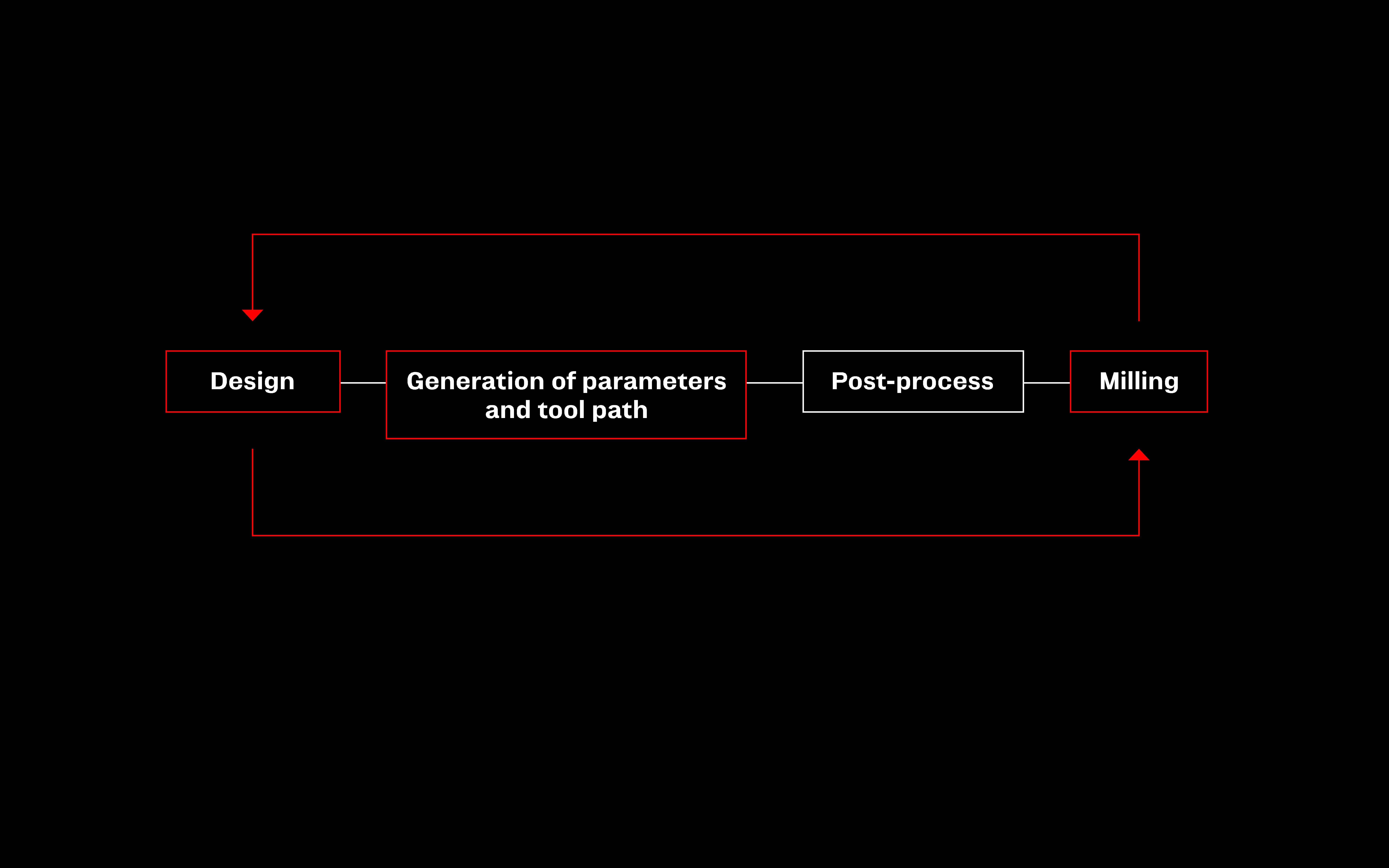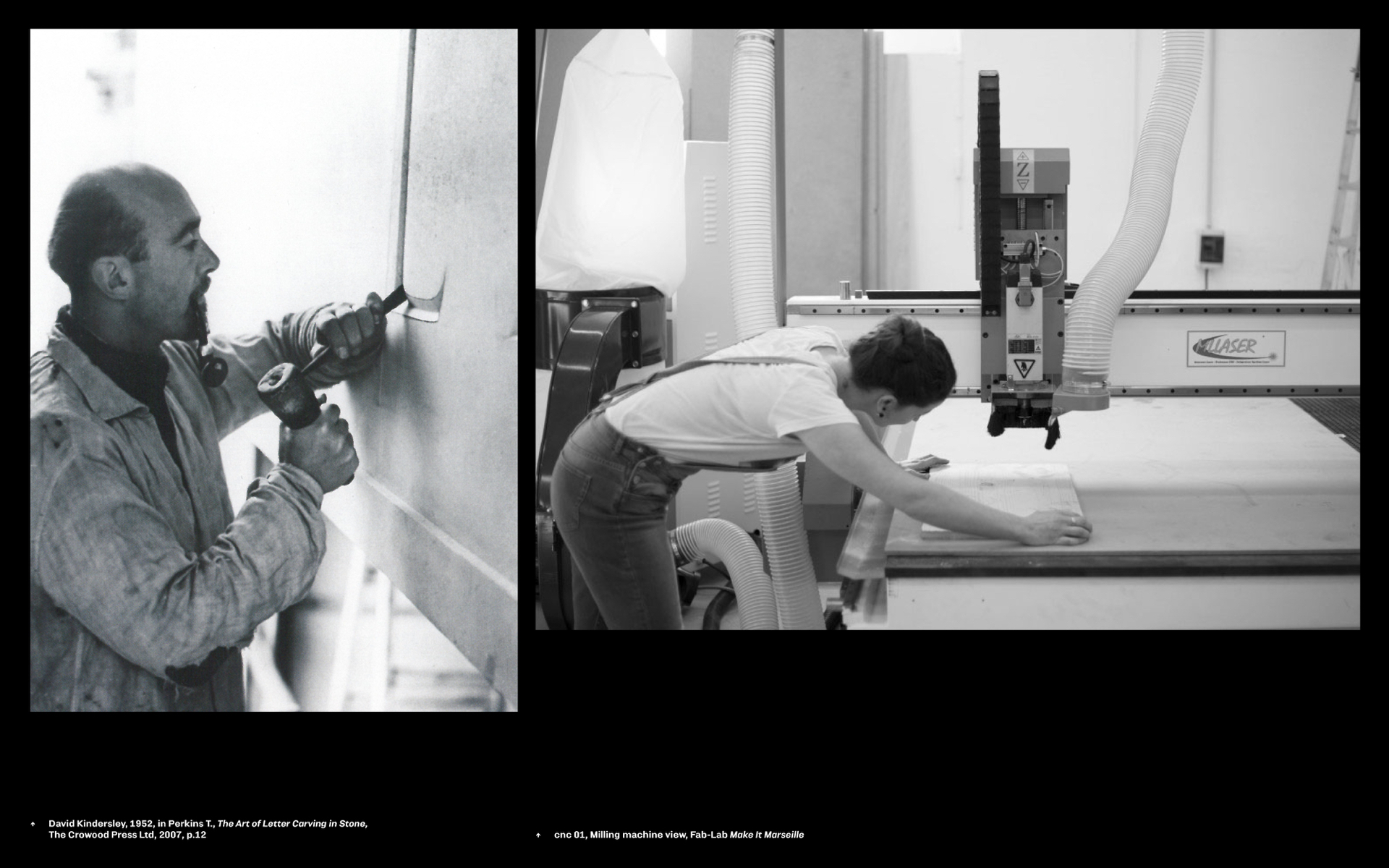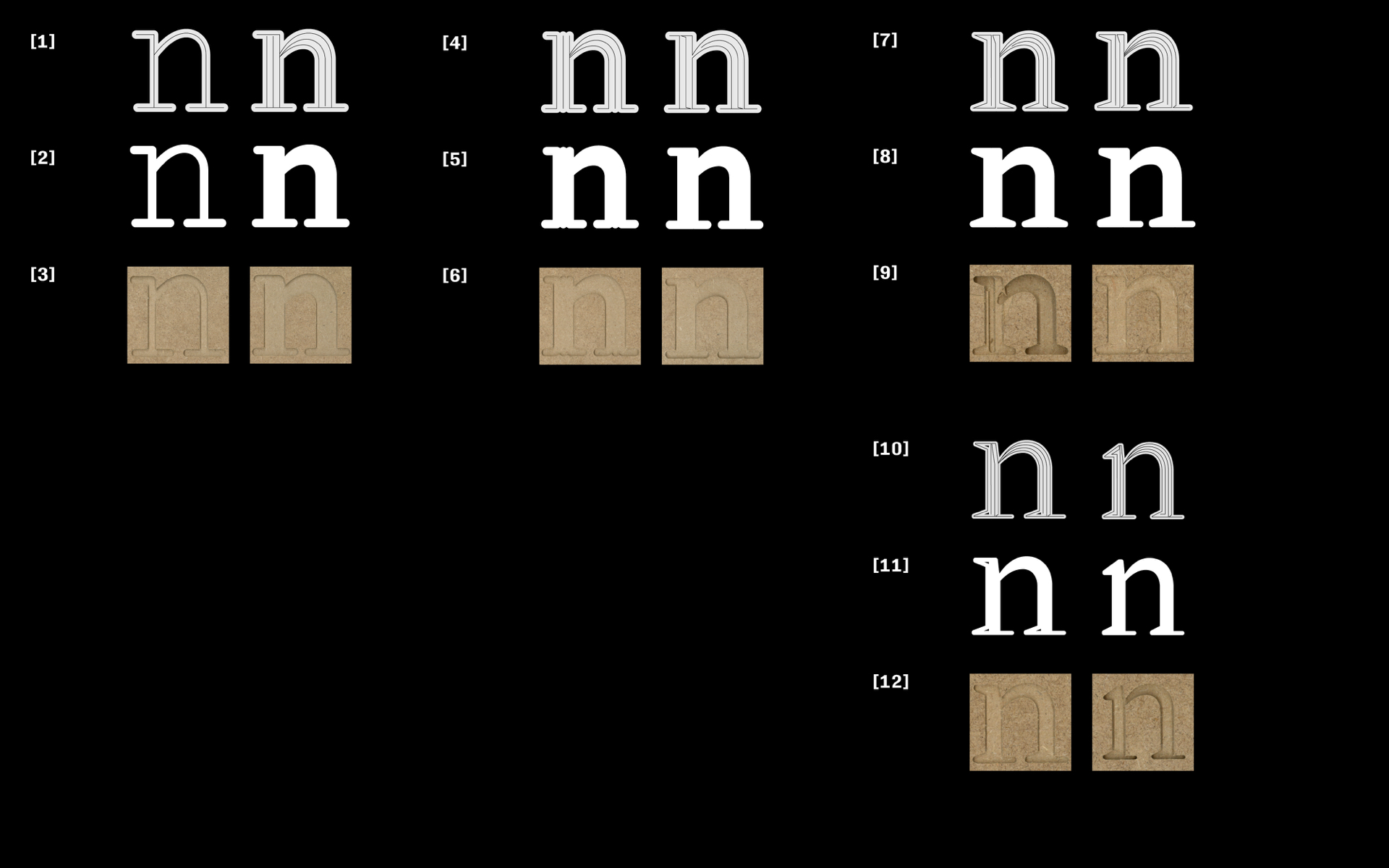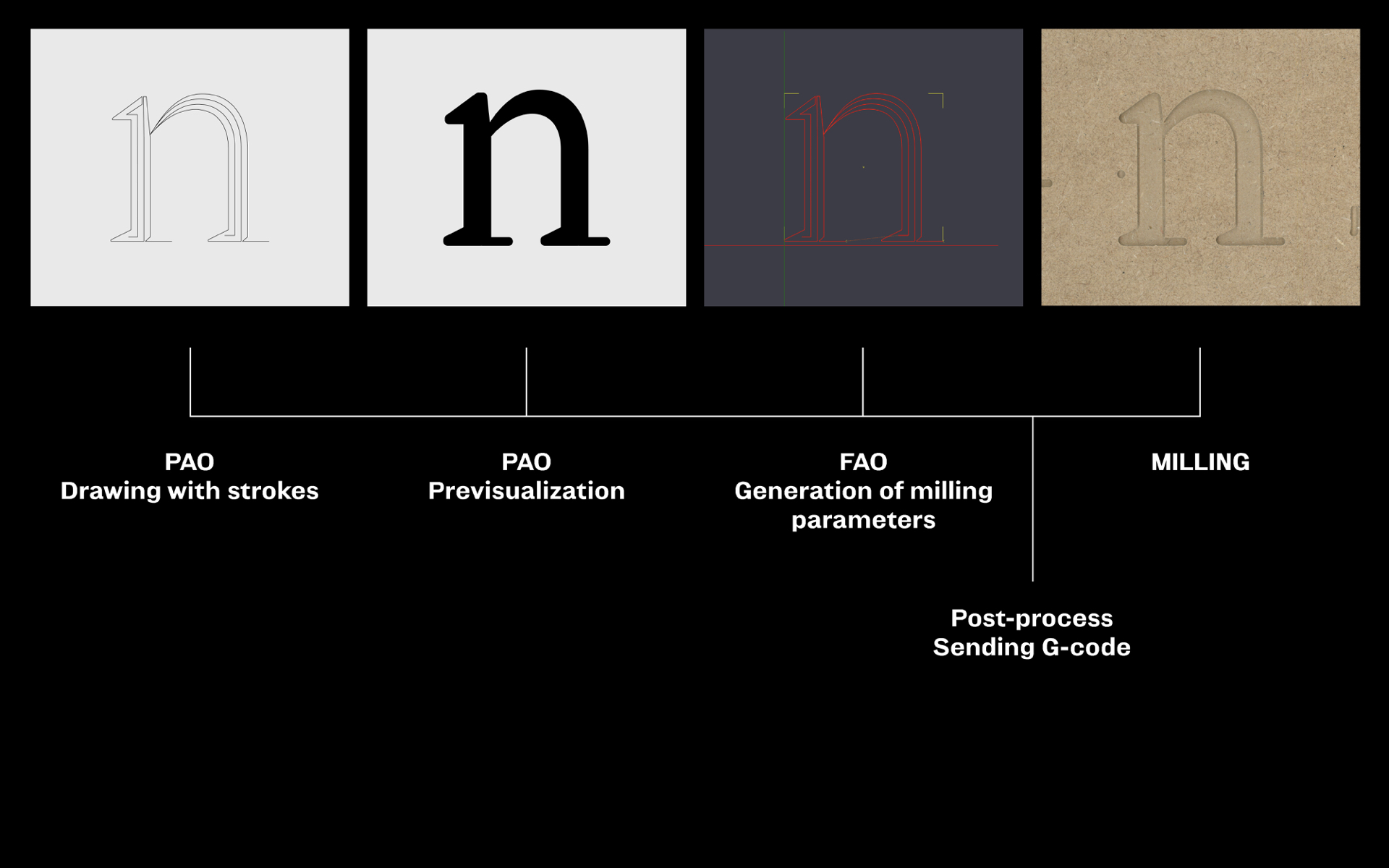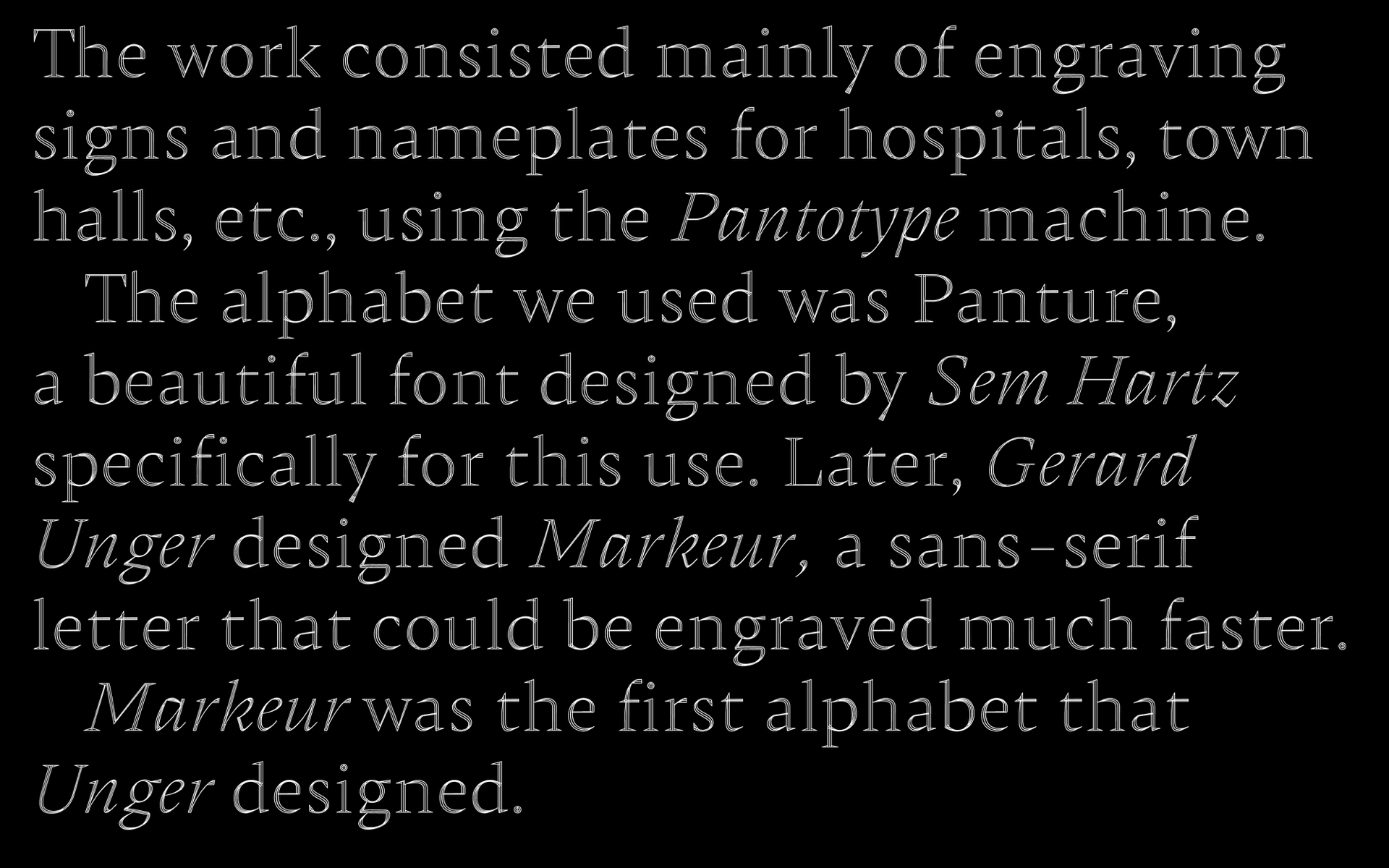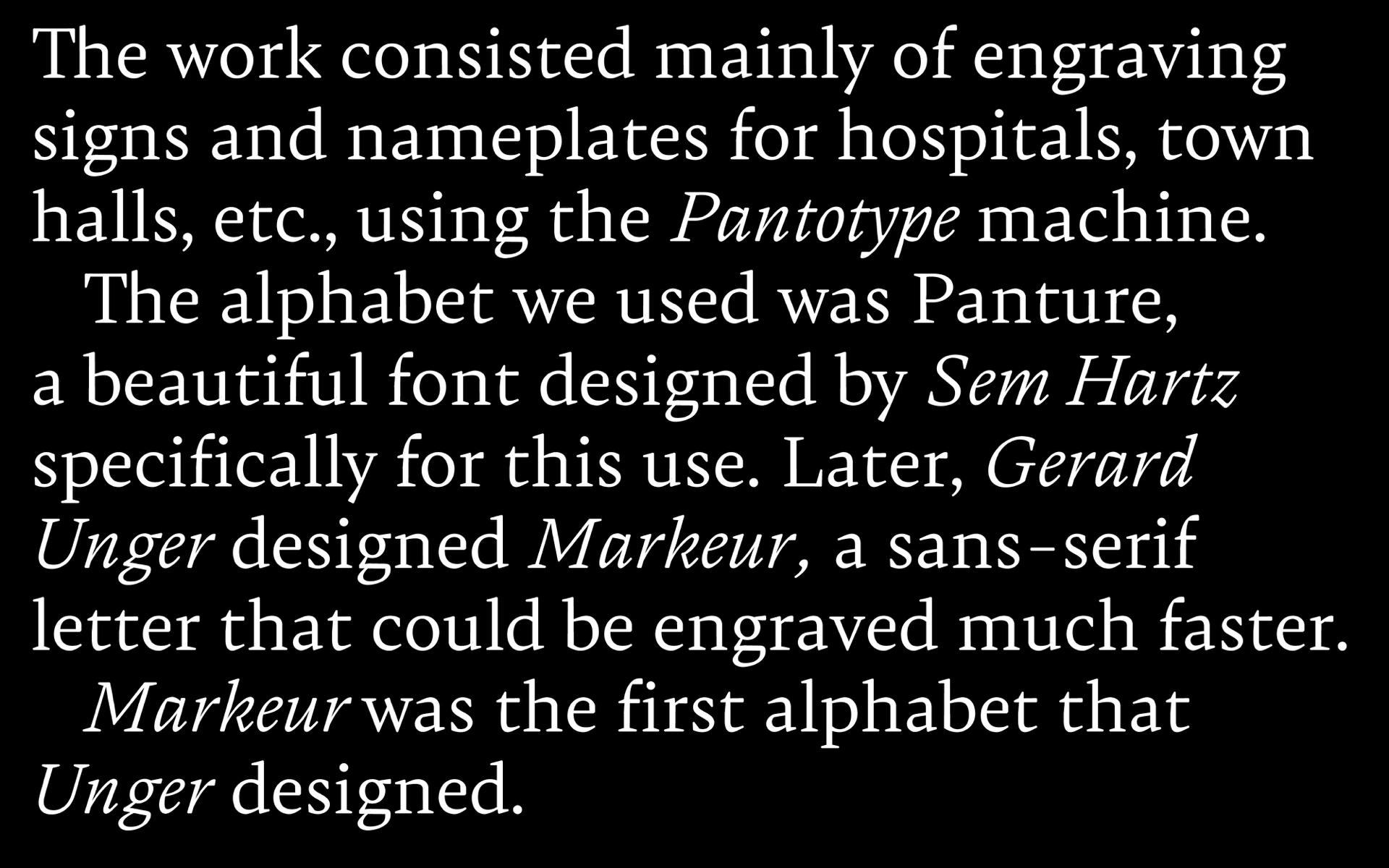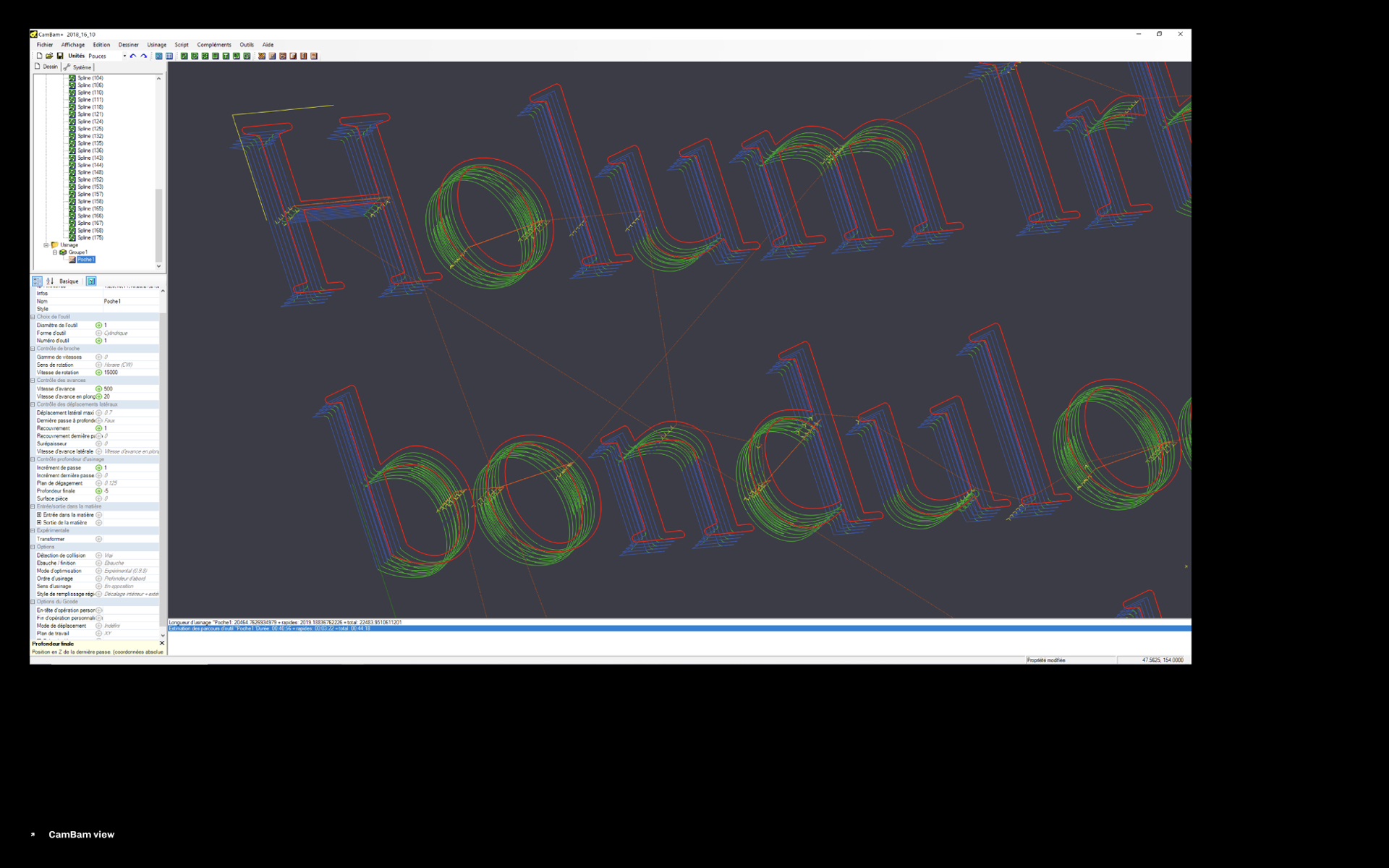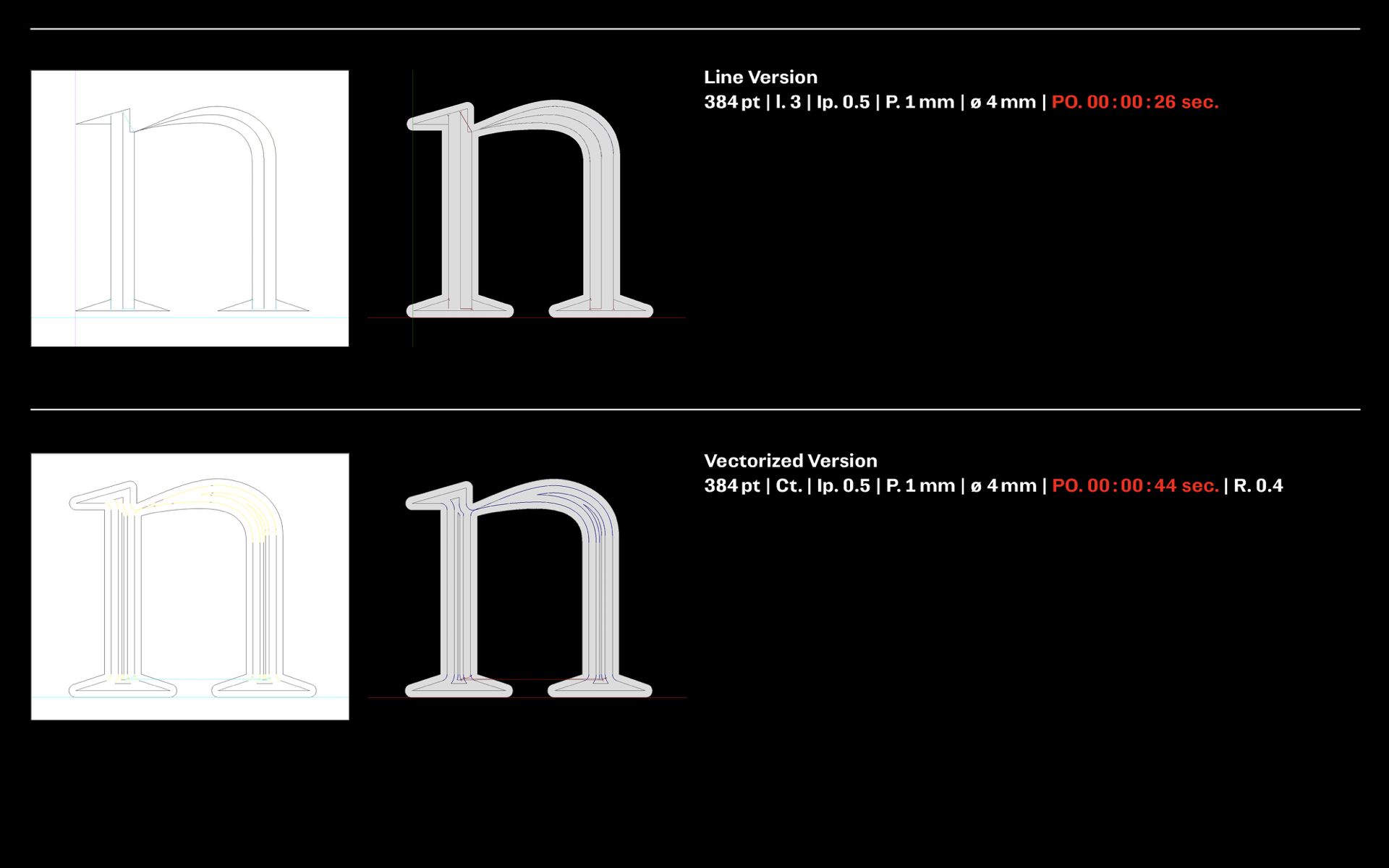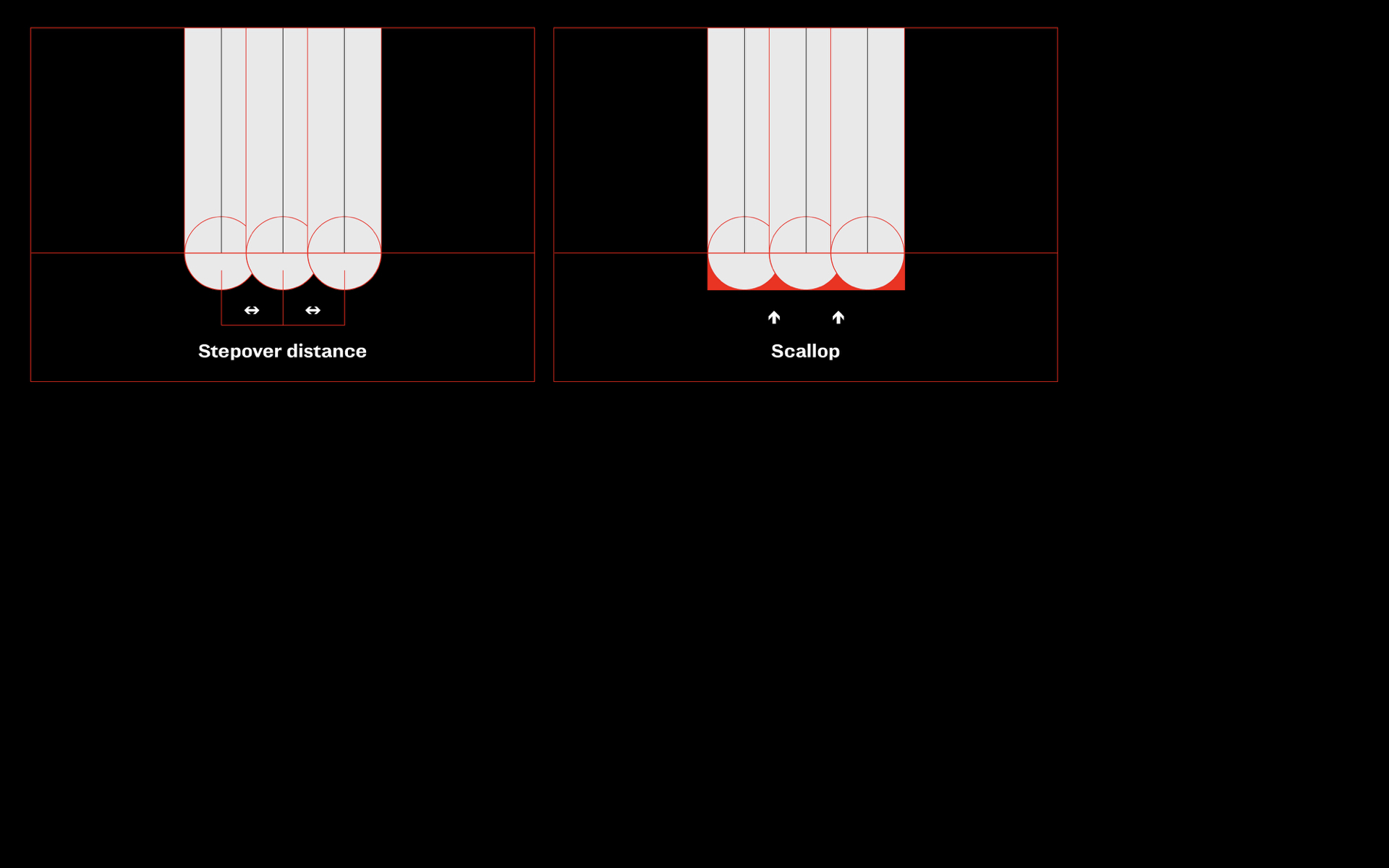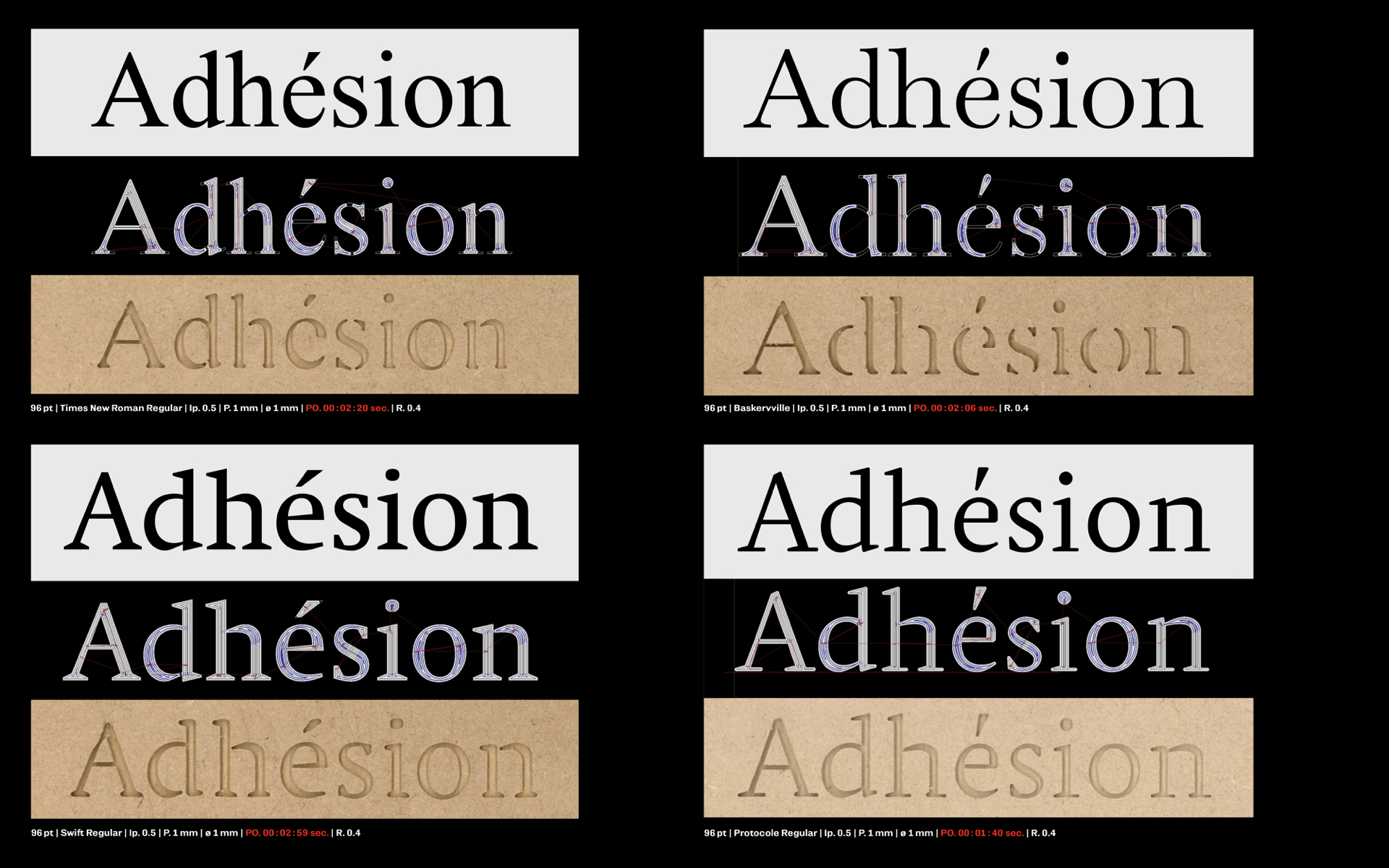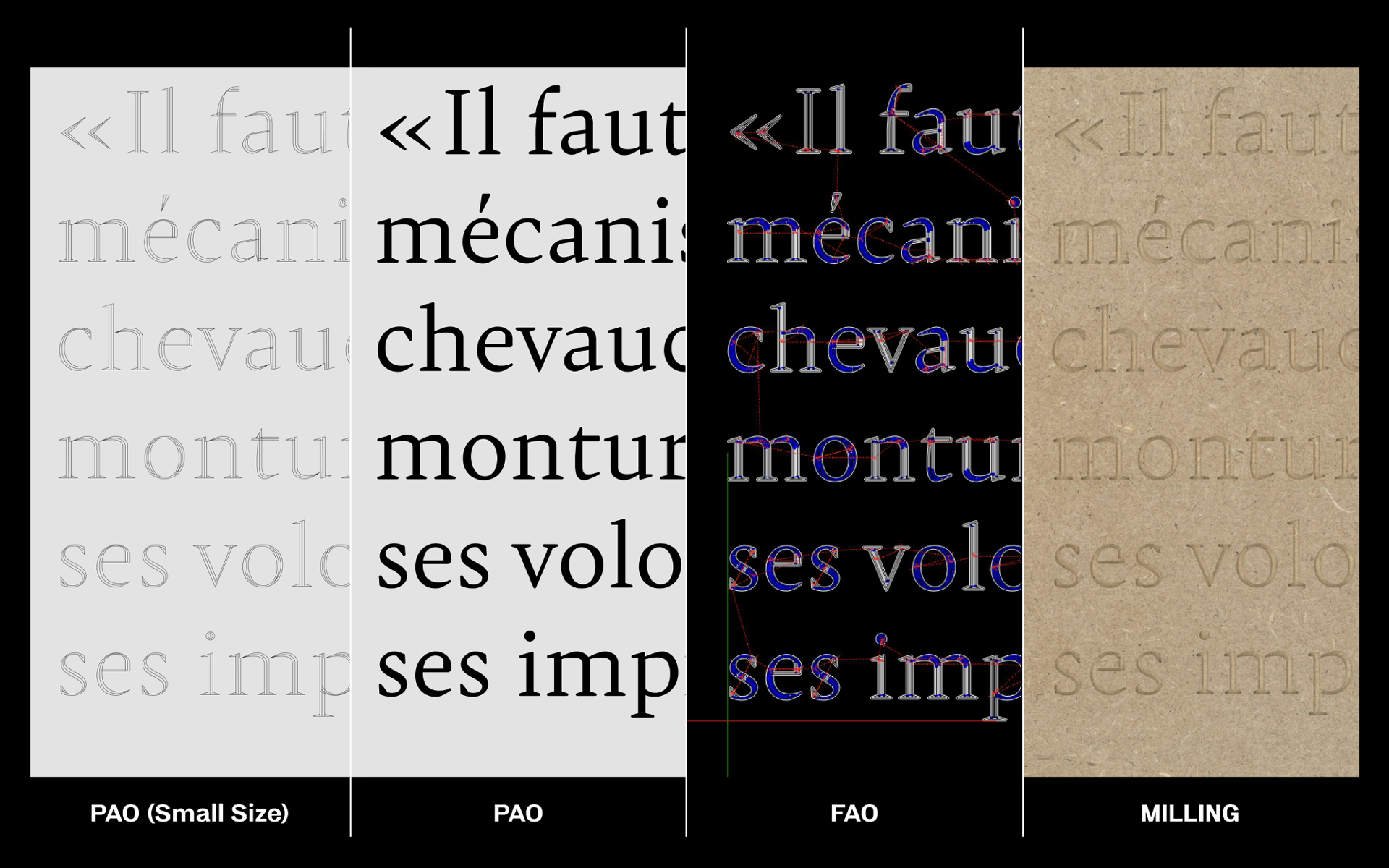CNC Type
Tanguy Vanlaeys zoomEngraving fonts and their intrinsic link with computer numerical control machine (CNC) offer new complex formal and technical issues.
How to think, draw and optimize them? Which software? In which format? For what size? What support? What kind of machining?
Indeed, they lead to think typography out of the predominant areas of application of the print / screen to bring it to those of machining and rapid prototyping. This part of the type design has only very rarely attracted the attention of type designer from whom they have been excluded. Engineers were preferred to designers to respond as quickly as possible to an industrial technical problem. Moreover, in the history of typography these typeface are not very present despite a clear legitimacy because of the correlation they propose between drawing, uses, materials and tools. Today, the directory of available engraving fonts remains to be interrogated and expanded. It is mainly content to imitate historical models with poor design quality and remains exclusively available in CAD software. Moreover, the democratization of access to CNC linked to the emergence of spaces dedicated to rapid prototyping (FabLabs, Maker Space, etc.) places these machines out of their initial context of mass production. Thus, this new situation makes it possible to introduce tools and logic formerly reserved for the industrial world in the research process in type design (observation time, diversion, experimentation).
In an approach finally close to that of the engineer (because preoccupied by the concern for optimization), the stakes of this research are operational and critical :
understand this new relationship that the type designer can maintain with the CNC
query and enrich the directory of engraving fonts
identify adapted / optimized forms
